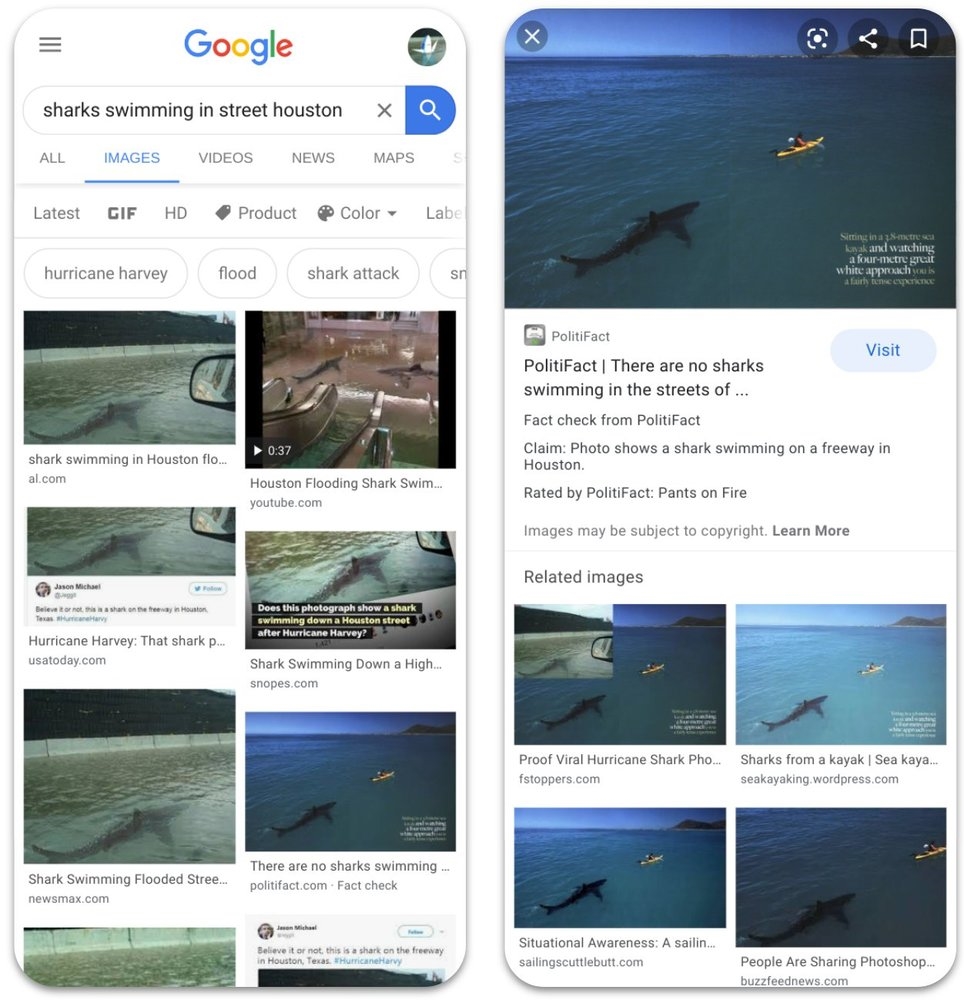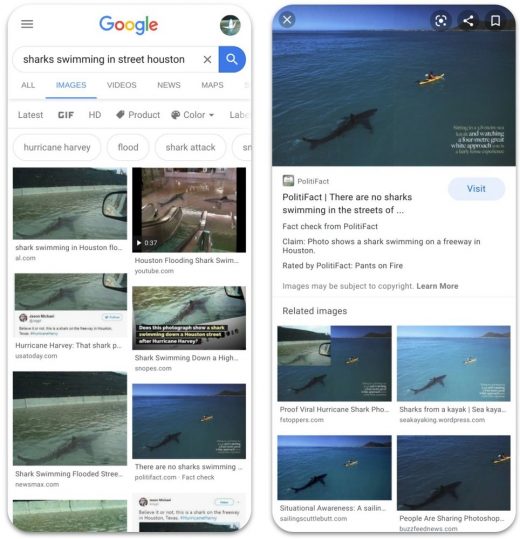Google Brings Fact Checking To Images
Google Brings Fact Checking To Images
Photos and videos are an incredible way to help people understand what’s going on in the world. But the power of visual media has its pitfalls?—especially when there are questions surrounding the origin, authenticity or context of an image. Starting today, we are surfacing fact check information in Google Images globally to help people navigate these issues and make more informed judgments about what they see on the web. This builds on the fact check features in Search and News, which people come across billions of times per year.
Now, when you search on Google Images, you may see a “Fact Check” label under the thumbnail image results. When you tap one of these results to view the image in a larger format, you’ll see a summary of the fact check that appears on the underlying web page. These labels may appear both for fact check articles about specific images and for fact check articles that include an image in the story.

Fact check labels appear on results that come from independent, authoritative sources on the web that meet our criteria. These sources rely on ClaimReview, an open method used by publishers to indicate fact check content to search engines. We already highlight fact checks on Search and in Google News to make this content easy to discover. YouTube also leverages ClaimReview to surface fact check information panels in Brazil, India and the U.S. The full fact check library can be accessed through a dedicated search tool and an open API.
Just as is the case in Search, adding this label in Google Images results does not affect ranking; our systems are designed to surface the most relevant, reliable information available, including from sources that provide fact checks.
To recognize the important work being done by fact-checkers during the ongoing pandemic, the Google News Initiative provided $6.5 million in funding support to organizations around the globe earlier this year.
Taken together, these efforts not only highlight the significant contributions of the fact check community, but they also ensure that people have access to critical context about the information?—and now images?—they encounter online.
(30)


